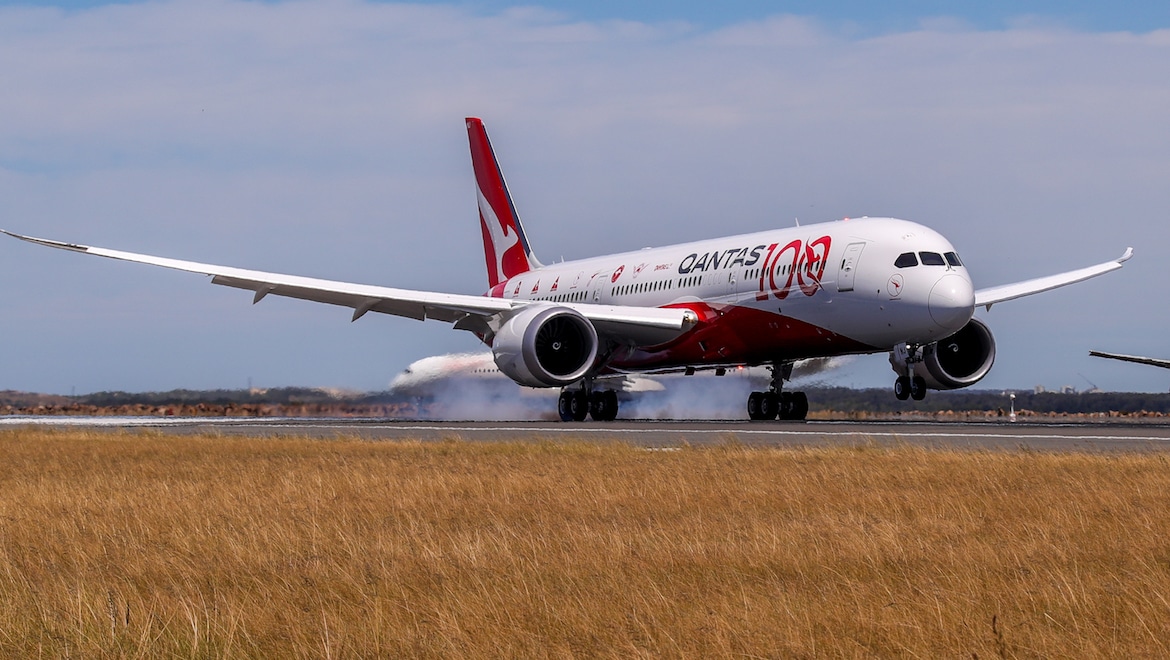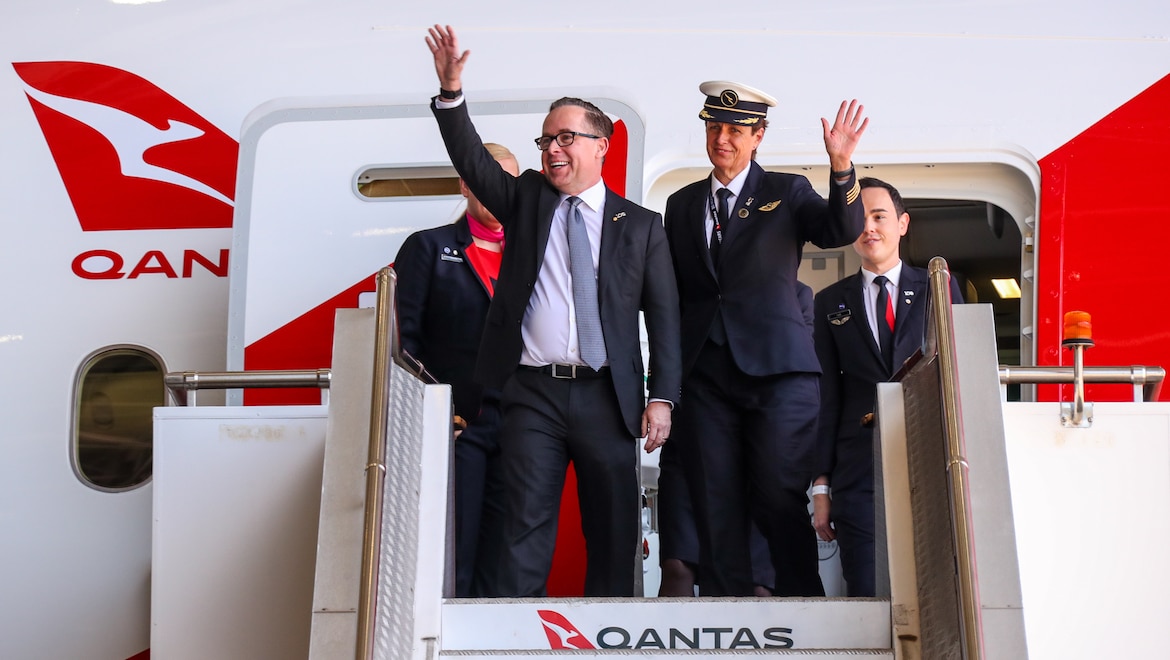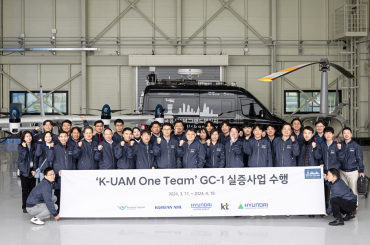
For just the second time in history, a commercial airline has operated a nonstop flight from London to Sydney.
On Friday afternoon, Qantas Boeing 787-9 VH-ZNJ Longreach touched down in Sydney as QF7879 at the end of a 19-hour, 19-minute journey from London Heathrow.
Its arrival comes 30 years after the first nonstop flight from London Heathrow to Sydney, which took place in August 1989 when Qantas ferried 747-400 VH-OJA City of Canberra home. That flight took 20 hours 9 minutes and 5 seconds.

On board Friday’s flight were Qantas group chief executive Alan Joyce, Qantas international chief executive Tino La Spina, researchers, invited guests and media. It was the second of three flights that aimed to research the impact of these ultra long-haul services on pilots, cabin crew and passengers.
The 787-9 took off from London Heathrow a little after 0600 local time on Thursday at an expected takeoff weight of 233,000kg – according to figures from Qantas – and landed in Sydney a little before 1230 Friday.
Our factory fresh #Dreamliner has taken off from #London as #QF7879 at a total weight of 230,920kg. Follow it on @flightradar24. #QFnonstop pic.twitter.com/Mbc3YeG78C
— Qantas (@Qantas) November 14, 2019
#QF7879 has touched down in #SYD non-stop from #LHR after 19 hrs, 19 min in flight, bringing our new #Qantas100 Dreamliner home on the eve of our 100th year.
— Qantas (@Qantas) November 15, 2019
Qantas said the route had been expected to overfly 11 countries – England, Netherlands, Germany, Poland, Belarus, Russia, Kazakhstan, China, Philippines and Indonesia – before crossing the Australian coast near Darwin.
During the flight, researchers from the University of Sydney’s Charles Perkins Centre and Cooperative Research Centre for Alertness, Safety and Productivity (Alertness CRC) evaluated the passengers and crew.
Qantas said in a statement on Thursday the research work of the Alertness CRC was primarily to examine the sleep cycles and alertness of pilots and cabin crew during extended flight duty to establish optimum crew work and rest patterns.
It's here. pic.twitter.com/YSabkzQMDr
— Stephen Creedy (@StephenCreedy) November 15, 2019
As was the case on the first research flight from New York JFK to Sydney in October, pilots wore an electroencephalogram (EEG) brain monitor.
Also, a camera was mounted in the flight deck to record “alertness cues and operational activities”.
The crew also had melatonin levels monitored by taking urine samples before, during and after the flight.
A trip from London to Sydney that once took First Fleet ships 252 days now takes some 19 hours 16 mins direct. Potentially with paying customers in a few years. What a world. Privilege for TTF to see @Qantas Dreamliner pull into @SydneyAirport, a game changer for longhaul tourism pic.twitter.com/Yyut7l0iqm
— TTF (@TTFAus) November 15, 2019
Meanwhile, the Charles Perkins Centre was researching ways to reduce jetlag and promote in-flight health.
Passengers had a wearable device to track movement and light exposure. They were also be assessed during the flight with a test performed on a tablet, among other activities.
The flight also had “altered food and beverage menus and service timings”, such as being served chicken broth with macaroni or a steak sandwich for the first meal after takeoff.
New York-Sydney measured 8,646nm, according to the Great Circle Mapper, while London-Sydney was 9,188nm.
Overcoming the final frontier of aviation. Today I’m flying @Qantas flight 7879 nonstop from London to Sydney. Flight time is projected around 19 hours and forecast to see double sunrise en-route! #Qantas #ProjectSunrise pic.twitter.com/VHgMljG7HD
— Sam Chui (@SamChuiPhotos) November 14, 2019
Qantas was currently evaluating whether to proceed an aircraft order to mount nonstop flights from London and New York to Australia’s east coast, which Joyce described as the “final frontier”.
While the 787-9 was being used to operate these research flights, the aircraft was not a candidate to operate these flights from 2023, should Qantas choose to proceed with what it has labelled Project Sunrise.
The two candidate aircraft were the Boeing 777-8X and the Airbus A350-1000. Both manufacturers submitted their best and final offers to Qantas earlier in 2019.
Longest flight, London to Sydney non-stop! #Qantas https://t.co/YgXB25l8FY
— Vali Muresan (@Vallavia) November 14, 2019
Joyce said there was “definitely support for the nonstop flights”.
“I’ve had business travellers tell me they’d rather stay on board and watch an extra episode of their favourite show before arriving at their final destination, rather than spending 90 minutes on the ground waiting for a connecting flight,” Joyce said in a statement prior to the departure of QF7879.
“I’ve also had a few parents tell me they would rather not disturb their kids if they are settled in and avoid having to bundle them and all their carry-on luggage off and back on a flight during a stopover.”
The airline has said previously a decision on Project Sunrise would be made by the end of calendar 2019 and was subject to discussions with the regulator and an agreement with the pilots union.
Flying over australia. pic.twitter.com/8dFa5BwhUr
— Richard Quest (@richardquest) November 15, 2019










